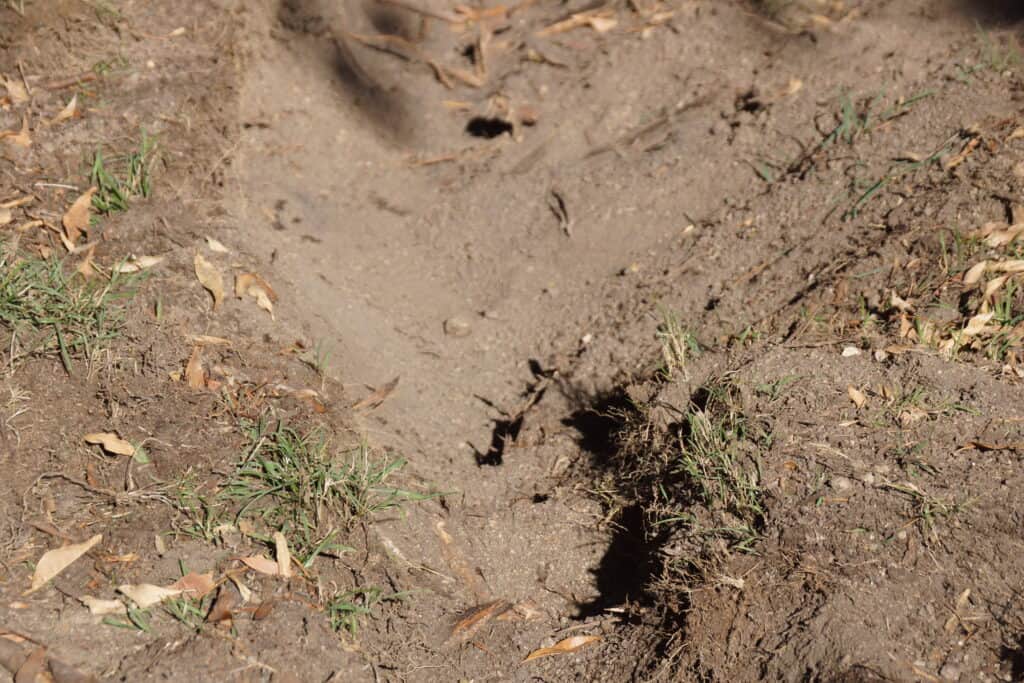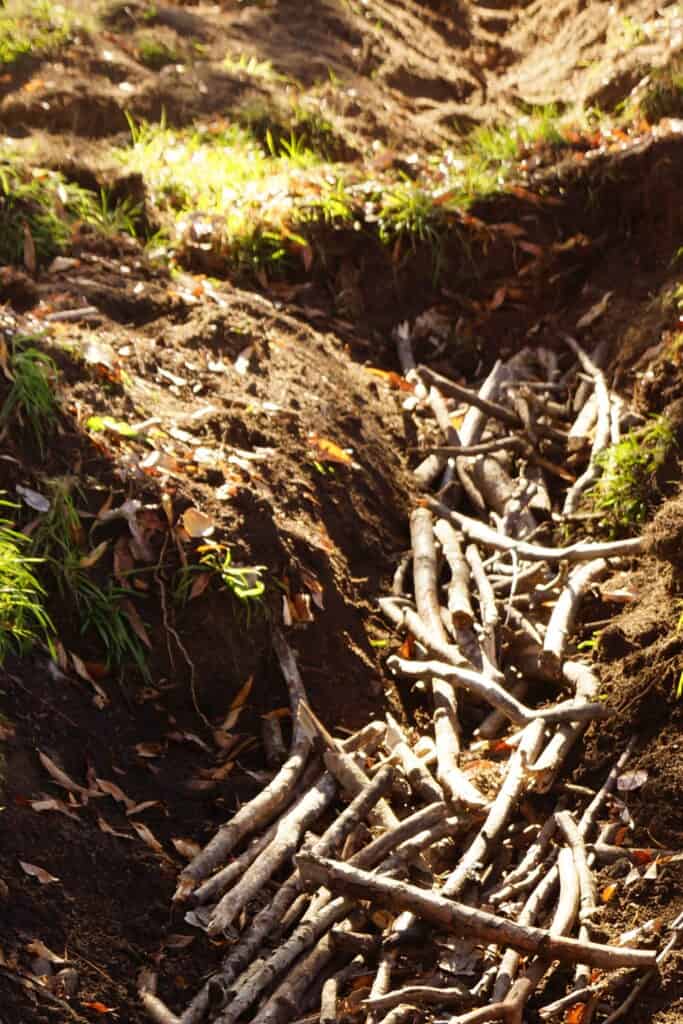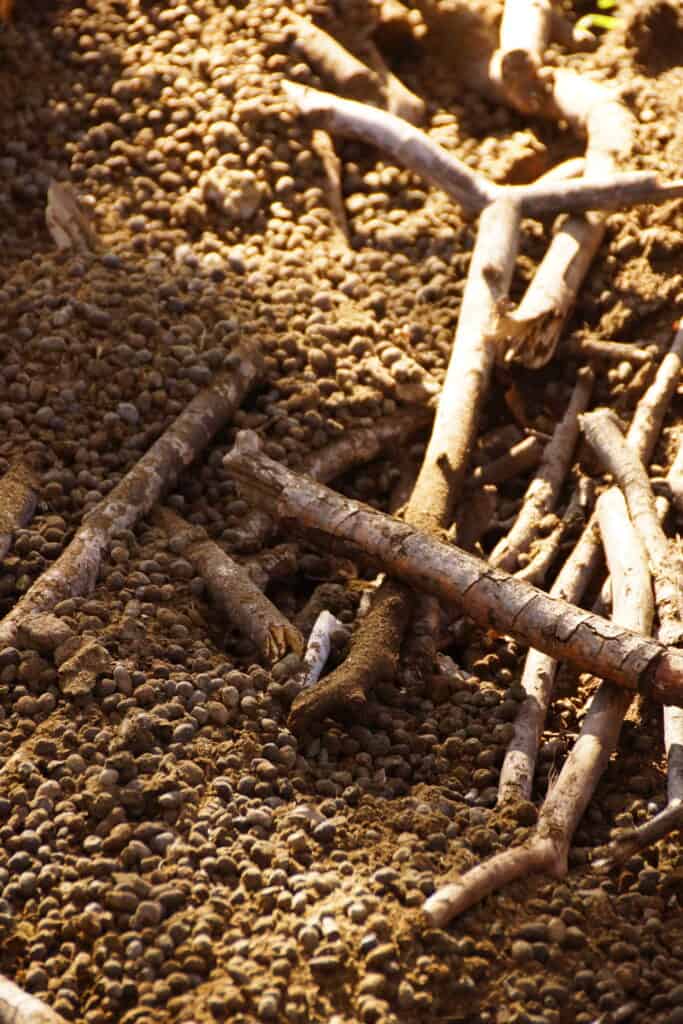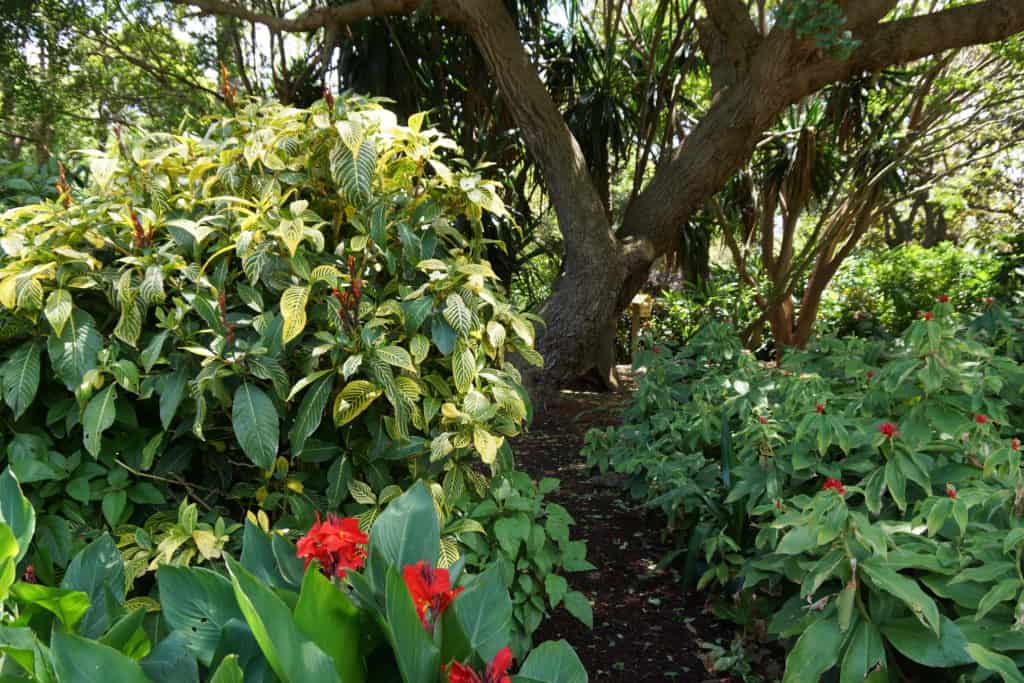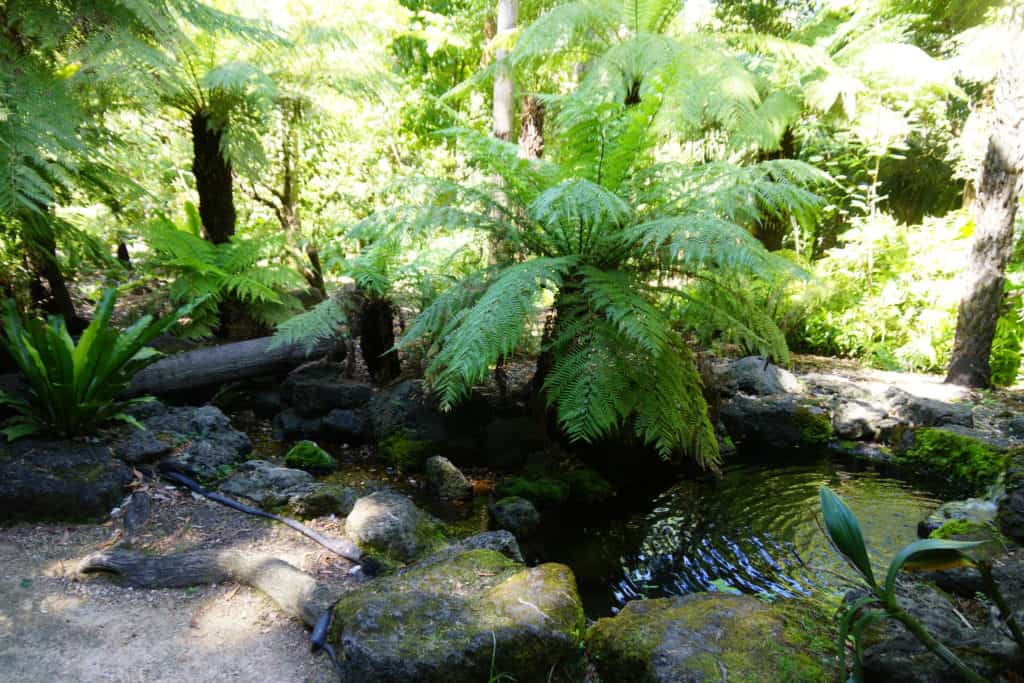In a time when the media is saturated with “Climate Change”, we rarely hear of the solutions – yet they are right before our eyes – the the mechanisms of Mother Nature herself.
Moderation generates balance and with it, regeneration. During the past few centuries, humans have tried to control nature and take shortcuts for profit. Today, we pay the price for that greed.
Permaculture is a natural way in which humans can positively restart and maintain agriculture within the beautiful and infinitely clever mechanisms of Mother Nature. Biodiversity naturally returns which ultimately maintains a healthy balance.
” . . . The Earth is currently experiencing the sixth massive extinction event of its evolutionary history and the first for 65 million years (Wilson 1992, 2002). This new geological era, now known as the Anthropocene, is unique in terms of the speed and breadth of extinctions and because the cause is the actions of just one species: Homo sapiens sapiens (Houghton 1994; Cardillo et al 2004). The current rate of species extinction is estimated to be 1000 times greater than it would be under the influence of natural disturbances (MEAB 2005). The International Union for Conservation of Nature 2007 Red List, an annual report on the conservation status of the world’s species, shows that one in four mammals, one in eight birds, and one in three amphibians are now in danger of extinction (IUCN 2007a) . . . “
Source – Extract: Connectivity Conservation
Whether it be in aquatic or terrestrial ecologies – in the harsh or more gentler regions of the World – if left to Mother Nature, the ecology constantly evolves, creating mechanisms and organisms that can cope and even thrive . . . All of these rely on diversity coupled with the symbiotic relationships formed between microbes, fungi, insects, plants, animals, sun, wind, energy, water, chemicals, etc.
That is the success of the natural world.
In this article we will explore
Why is Permaculture Less Common in Agriculture Today?
As the Industrial Revolution increasingly dominated the past centuries to the level that we witness today, it sustained population growth and lavish lifestyles to levels never experienced on this planet before. Ever expanding mining, industry, manufacturing, transport, invention and agriculture was required to meet these demands resulting in a relatively few greedy entrepreneurs reaping the bulk of the rewards.
Products were designed for shortened lives to secure their constant demand.
However, these practices have resulted an in an unsustainable and ever increasing toll on the Earth’s resources. The processes and products have polluted and raped the land, waterways and oceans yet the greater populace continues to demand high quality and greater choices – but all for bargain prices . . .
These demands do not consider the cost to the planet – as long as their infinite desires are satisfied.
Hence, permaculture in agriculture waned into the background as the seeming efficiencies of monoculture prevailed. Plants and livestock are genetically modified for rapid growth, appearance, suitability for transport, profitability – rather than taste, enjoyment, nutritional value – let alone the respect for the miracle of life itself.
” . . . Industrial food production has been recognised as a significant cause of biodiversity loss. From the 1940s, a process of industrialisation of agriculture has taken place, known as the Green Revolution, based on the large-scale mono-crop farms producing cash crops for export. This agricultural model is heavily mechanised and is based on the extensive utilisation of chemical fertilisers, pesticides and herbicides . . . “
Source – Extract: Responding to the Biodiversity Crisis: Permaculture & Sustainability Transition
As we progress further into the first quarter of the 21st Century, it’s shocking to realise that it has taken less than a century for the environmental damage to become critical – and that this is greatly due to the devastation of ecosystems as well as to the mass extinction of species – great and small.
Much of this is attributed to monoculture and meeting the every increasing demands of an ever increasing population.
We are currently experiencing Climate Change scenarios that scientists had warned us of – droughts, floods, fire storms, wind storms . . .
The man-made means of attempting to manipulate Mother Nature has come at a huge price as weather extremes threaten the landscape and all that lives upon it.
The solution is to restore balance back into Nature – to replace what we have consumed – but in a natural way. The greatest and most practical action would be to restore our soils (the largest carbon sink of the World) organically; and to plant, plant, plant . . .
And that in a nutshell, is permaculture.
Sustainable Permaculture
The farmers of the century gone by did not see the value in retaining natural corridors and corners to ensure the survival of indigenous species and biodiversity, nor did they wish to waste any space on windbreaks, hedges or trees for shelter. Thoughts are beginning to change as drought ravishes the land and top soils soar into the atmosphere. Interest in sustainable farming practices is on the rise as experiments on highly eroded, dry and salinised lands prove that land can be restored by hydration and organic nutrition.
Permaculture (derived from the words “Permanent Agriculture”) begins with a creative design, complimented by plant choices and crop rotation. Traditionally stock was rotated after the crop, and then rested. Paddocks were protected by hedges, pretty flowers and natural habitat. Together, biodiversity flourished.
Permaculture is based on diversity. It adopts the principles of nature which develops balance by microbes, fungi, insects, birds, plants, animals, sun, wind, energy, etc. working symbiotically to ensure water retention, drainage, warmth, shelter, growth, beauty, regeneration, etc. – thereby creating a sustainable ecosystem that nurtures itself as well as the landscape that surrounds it. Essentially, it is the opposite to monoculture.
A healthy soil structure is full of rich organic matter deposited from plants and animals on which micro-organisms, fungi, insects, etc. feed, ultimately converting it to plant accessible Nitrogen, Phosphorus and Sulfur – a process defined as mineralisation. The water and carbon storage capability of organic rich soils ensures the bioavailability of nutrients to plants which in turn increasing biodiversity ensuring the success of the ecosystem.
Essentially, soil organic matter is grouped into four main groups:
- plant residue – decomposes within weeks to years
- particulate organic matter 0.053 to 2mm in size – decomposes within years to decades
- humus organic matter less than 0.053 mm in size – takes decades to centuries to decompose
- resistant organic carbon which is inert – takes centuries to millennia to decompose
As the Carbon : Nitrogen : Phosphorus Ratio decreases, the organic matter becomes increasingly nutrient rich.
Hence, managing the organic component of soils increases the plant-available nutrition, as well as the water, air and carbon storage capacity.
The Process of Permaculture
Prior to the invention of soil testing, scientific analysis of chemicals, element, microscopic organisms, pH, etc., expertise was gained by learning from the experience of those who observe the landscape, weather, birds, animals, organisms, insects, etc. as well as by smelling the soils and water bodies, and feeling the structures between their fingertips . . . Farmers could almost sense and feel the balance of their soils – the lifeline to their income.
David Holmgren, a renowned author on Permaculture, developed the following 12 permaculture design principles:
Observe and interact: By taking time to engage with nature we can design solutions that suit our particular situation.
Catch and store energy: By developing systems that collect resources at peak abundance, we can use them in times of need.
Obtain a yield: Ensure that you are getting truly useful rewards as part of the work that you are doing.
Apply self-regulation and accept feedback: We need to discourage inappropriate activity to ensure that systems can continue to function well.
Use and value renewable resources and services: Make the best use of nature’s abundance to reduce our consumptive behavior and dependence on non-renewable resources.
Produce no waste: By valuing and making use of all the resources that are available to us, nothing goes to waste.
Design from patterns to details: By stepping back, we can observe patterns in nature and society. These can form the backbone of our designs, with the details filled in as we go.
Integrate rather than segregate: By putting the right things in the right place, relationships develop between those things and they work together to support each other.
Use small and slow solutions: Small and slow systems are easier to maintain than big ones, making better use of local resources and producing more sustainable outcomes.
Use and value diversity: Diversity reduces vulnerability to a variety of threats and takes advantage of the unique nature of the environment in which it resides.
Use edges and value the marginal: The interface between things is where the most interesting events take place. These are often the most valuable, diverse and productive elements in the system.
Creatively use and respond to change: We can have a positive impact on inevitable change by carefully observing, and then intervening at the right time.
Source – Extract: Permaculture: Principles and Pathways Beyond Sustainability by David Holmgren
Permaculture Guidelines
Permaculture is so UNcomplicated as it literally compliments the mechanisms and diversity of Mother Nature herself. Improvement of soils, whether it be a garden or paddock, can be as simple as:
- Selection of sites fit for purpose (e.g. sun, shade, soil, space, water source)
- Protection by planting hedges, retaining wildlife corridors, planting structural trees, building barriers – to slow the drying winds
- Construction of structures to protect areas from predators
- Aeration of compacted soils
- Addition of heaps of home-made organic compost, mulch and moisture
- Surround with beneficial insect and bird attracting flowers, plants and water
- Integration of companion plants
- Rotation of crops: plant → animal → rest
- Mother Nature will do the rest . . .


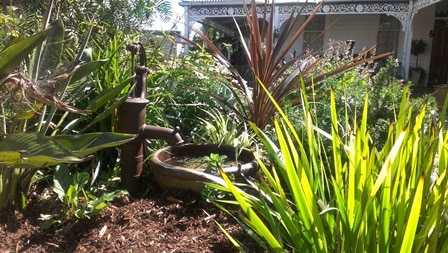
Enriching and balancing your soils will not happen overnight, but it will happen. Be patient. The results will astound you, as an established and practical garden design incorporating the crucial foundation of healthy, organic and mulched soils together with a sensible array of plantings, is guaranteed to require little weeding nor watering.
Consider:
- planting understoreys of pretty flowers which will attract the many essential and beneficial birds, insects and microbes
- chooks to eat scraps, make perfect manure, cultivate and eat bugs when the harvest is complete
- an enclosed worm farm to compost all organic matter (apart from the onion and citrus families) → the castings and worm juice are invaluable to the soil and plants
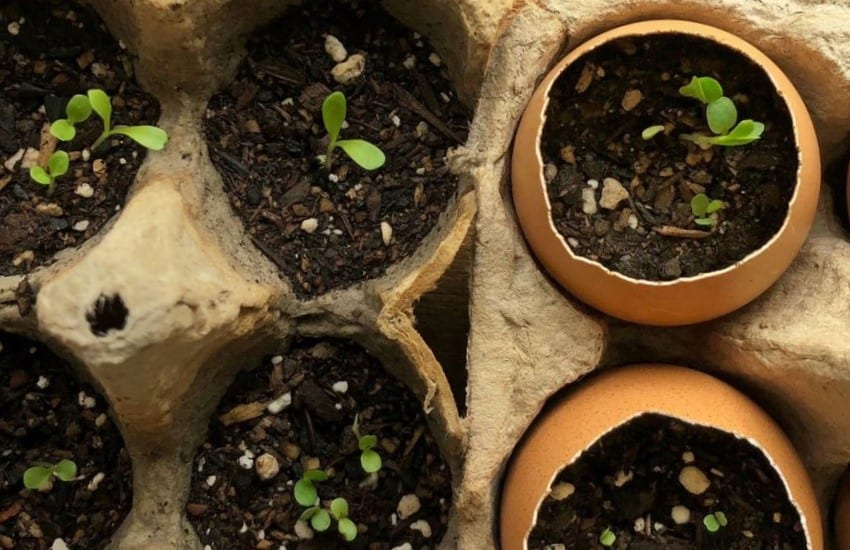
Seeds vs Seedlings
- purchasing seeds rather than seedlings → they are very budget friendly
- incorporating heritage seeds → as they often regenerate naturally
- save your egg shells and cartons to use as seed raising pods
Not only are these guidelines practical, they also add beauty and tranquility to your garden or paddock → which in turn is guaranteed to attract the magic of life and biodiversity in all forms.
Processes that Compliment Permaculture
A fundamental element in the success of any ecology is harnessing water, both in the soil and by creating water bodies.
On a larger scale, Natural Sequence Farming has been incredibly successful here in Australia. For the home garden, micro climates can be created by planting structural trees and installing bird baths and/or water features – just remember that water without an aquatic ecology can foster mosquitoes and should be emptied daily . . . A well balanced fish pond, however, will never support mosquitoes as fish feast on the larvae!
Natural Sequence Farming
Much of Australia is exceptionally dry with very little top soil. Therefore, harnessing moisture is paramount. Peter Andrews was instrumental in developing and promoting a method termed Natural Sequence Farming (NSF). It is a landscape management system designed to harness natural water cycles. This relatively natural solution involves the introduction of structures, logs, vegetation and leaky weirs into waterways to slow the flow of water, trap sediment, encourage the growth of trees, reeds and vegetation which all assist in reducing erosion and filtering the water. The result is a healthy aquatic environment in which biodiversity flourishes. This, in turn, waters the landscape.
” . . . In the process, various plants collect specific substances and the plant communities change in predictable sequences. As part of the biodiversity of a property and catchment, these plants are also a part of multiple food chains and a key to enhancing fertility.
Nutrients contained in soil or water are mobile and can be quickly lost off-site. Nutrients contained in biodiverse living bodies are stable. NSF management keeps natural functions connected which allows for quick exchange and conversion of nutrients within ecosystems on properties.
Peter Andrews has found that even plants labeled as weeds can serve as pioneering species in inhibiting nutrient and soil erosion. They collect and supply essential substances for environmental health. Once slashed, fertility is built up and the weeds are replaced naturally by palatable grasses . . . “
Source – Extract: Natural Sequence Farming
Hügelkultur
Hügelkultur arose in the Germanic regions of Europe and has been practiced for centuries. The word translated directly from German = Hill Culture.
Hügelkultur is a complimentary mechanism to permaculture. It is based upon digging trenches and burying logs, branches and twigs rather than burning them which is most commonly practiced in Australia. As the timber, which is usually buried with a mix of manure and smaller organic matter such as straw, leaves, weeds, hay, etc., beings to rot, it promotes microbial, then macrobiotic processes, increasing water retention and emitting heat during the decomposition process. Worms and soil bugs will be attracted to this delightful dinner – and do their bit to construct a beautifully balanced organic soil. The heat generated by the decomposing matter below will also encourage a longer growth season.
Hügelkulture beds are naturally aerated and therefore do not require the seasonal tilling or turning of the soil.
Water is paramount in Australia. Another incredibly beneficial element to Hügelkultur is the water storage capacity of the porous wood which acts like an underground sponge as it decomposes. That is why it is important to include larger logs into the mix. In theory, the buried, decomposing wood could absorb enough water to sustain a crop throughout the dry season. It also encourages roots to travel deeper to the water and nutrient source, thereby encouraging stronger plants.
As the name would suggest, the beds are raised to form a mound. Adding this base of organic matter below the surface, promotes decomposition over a longer period essentially delivering a slow release fertiliser as well as a boost of organic matter in which water and carbon are stored.
How to Engineer Hügelkultur Beds
To kick start the decomposition process and counter the Nitrogen draining affect of raw wood, fill the crevices with leaves, twigs, straw, hay, weeds, grass clippings and raw manure. A mix of fresh and partially decomposed wood is ideal as the decomposing wood already contains some of the microbial elements needed to boost the decomposition process. The mound is then topped with layers of soil, compost and mulch.
On a larger scale, rather than burning felled trees, Hügelkultur buries them thereby replacing all that that tree had consumed in its life straight back into the soil.
Forming Hügelkultur Beds:
- Select the location, size and shape of your Hügelkultur bed – it could be for a flower bed in your front yard, a veggie patch, a raised bed, an orchard, a hedge or an entire paddock
- For flower beds and veggies, excavate the Hügelkultur bed to a depth of 30-50 cm
- For raised beds, fill the bottom half to two-thirds, depending on the height of your raised bed, with your Hügelkultur mix (see Point 5 below)
- For trees and hedges, excavate the Hügelkultur bed to a depth of 80-100 cm. Having a deeper trench will encourage roots to move deeper into the soil for nutrients and water thereby ensuring a solid foundation for the mature tree.
- Have you ever noticed that so many of the trees that topple in Australia – no matter what the species, have a very shallow spread of roots and very few, if any that penetrate deep into the soil structure?
- Place a mix of rotted and fresh larger logs into the excavated area – fill crevices with twigs, branches, leaves, weeds, straw, hay, grass clippings or any other organic matter you may have on hand, PLUS raw manure – whether it be sheep, horse, cow or chook . . .
- Water in well
- Backfill with alternating thick layers of soil – and – hay or straw
- Water in well
- The second-last layer should consist of a thick layer of soil mixed with home-made compost and rotted manure – some 30 cm deep
- Top dress with a final, thick layer of sugar cane mulch or pea straw
- Water in well
- Rest for some 4 to 6 weeks – depending on the weather
- Top dress again, if necessary
- Plant as desired

A trench is dug into the poor, lifeless soil 
Assorted sizes of sticks & small logs, leaves, straw & compost of various states of decomposition are added to the trench 
Manure & water are added. The trench is back-filled with soil & compost.
Naturally, adopting the principles of crop rotation and companion planting will maintain the soil balance, keeping plants healthy and productive.
Wildlife Corridors & Corners
On a larger scale, the introduction of wildlife corridors and corners on farms has proven to increase biodiversity and hence the sustainability of production. The large scale clearing of land to date, has removed the habitats on which the Australian landscape had depended on for tens of thousands of years.
” . . . ‘Disconnectivity’ refers to impediments to the natural movement of organisms or the flow of processes. In the absence of human perturbations, there is a degree of both connectivity and disconnectivity due to natural barriers of various kinds. However, one of the consequences of habitat loss and fragmentation is a breakdown in connectivity of many spatially dependent, physical, biological, ecological and evolutionary processes. Connectivity conservation seeks to protect and conserve intact connections and strategically rehabilitate disrupted connections . . . “
Source – Extract – Connectivity Conservation
A wonderful success story of a wildlife corridor within a farm setting can be found on The Baddaginnie Run located in the Strathbogie Ranges district of Victoria, Australia. Commenced in 1996, it has proven that the diversity has succeeded in producing the conditions conducive to growing high quality grapes which, in turn, are the foundation creating high-end wines.
So why sacrifice precious agricultural land to create a wildlife corridors and corners?
The simple answer is biodiversity. It not only ensures the balance of nature amidst our gardens and fields, it also provides space and feed to ensure the survival of our indigenous species. By creating corridors linking state forests and national parks, species are free to travel in search of food, water, shelter, mates, new territories for the young – which, in theory, should reduce the impact that they have on agriculture and suburbia. These species include everything from microbes, macrofauna, fungi, insects, spiders, reptiles, birds, mammals, marsupials, etc.
By integrating successfully with indigenous species, wildlife corridors and corners can assist in reducing:
- nutrient inundation into waterways
- salinity
- erosion
. . . as well as provide:
- wind breaks, shade and protection
- a source of timber and firewood
- attract beneficial bugs and birds for cross pollination and to control pests
- increased biodiversity for soil and ecological health
- increase the sustainability of ecosystems
- improved conditions for agriculture
- a natural filter for streams, rivers, and lakes which can build healthy aquatic ecosystems that can sustain life
- an avenue to save threatened species from extinction
- greatly increased carbon pools thereby assisting in reducing global warming
. . . all of which work together to provide a healthy environment for all.
Ideally, the easiest way to provide wildlife corridors is to preserve a section of indigenous habitat of some 100 m in width or more. If this is not possible, restoring the corridor with local flora and fauna including a variety of structural trees with understories of shrubs, grasses, rushes, ground covers, climbers, etc., ensuring there are some hollows and places for birds and fauna to call home.
Photosynthesis
Green plants use light energy from the Sun to convert the carbon dioxide produced by all breathing organisms on Earth into the simple sugar, glucose, as well as reintroducing oxygen back into the atmosphere via the process known as photosynthesis. This is why the few remaining forests of the World such as the Amazon are often referred to as the “lungs of the World”.
Most plants produce more glucose than they need. The excess is stored in the form of starch and other carbohydrates in the plant’s roots, stems, and leaves. What the plant doesn’t need for growth is exuded through the roots to feed soil organisms. There the carbon is humified and rendered stable. Carbon is the main component of soil organic matter and helps give soil its water-retention capacity, its structure, and its fertility.
Conclusion
We urgently need to reassess our farming and gardening practices.
Permaculture is an adaptation of natural principles. It is sustainable, regenerative and diverse thereby capable of relying on the ecology to maintain the balance and controls. Permaculture nurtures biodiversity and has proven its sustainability over thousands of years.
Monoculture on the other hand, relies on artificial chemical fertilisers, chemicals, balancers, herbicides, pesticides, etc. – all of which reach a level of failure as the soil it ravishes, dies.
Within a mere 80 years, monoculture has literally killed our soils, brought countless species to extinction, threatens many more, and now jeopardises life itself on Earth.
Let us choose to move back to a healthy and sustainable future.
